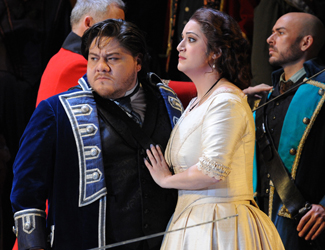Album Review: ROBERT DE VISÉE Pieces for Theorbo/Ng/ A415
Album Review: ROBERT DE VISÉE Pieces for Theorbo/Ng/ A415
ROBERT DE VISÉE Pieces for Theorbo is a recent recording by multi-instrumentalist Shaun Ng. An expert on the bowed and plucked instruments of the early music era, on this recording Ng performs exclusively on the French theorbo.
The French composer Robert de Visée (c.1655 – 1732) was a lutenist, guitarist, theorbist and viol player as well as a singer and composer at the courts of the French kings Louis XIV and Louis XV and at Versailles. He became a chamber musician to Louis XIV and was often called upon by the king to amuse the dauphin. Quite the celebrity in his time, his music is apt repertoire for showing off the theorbo. His writing was shockingly inventive for the times with unusual harmonies, lyricism, ornamentation and expressiveness. He was also a gifted transcriber, taking music by Lully and François Couperin, written for the court and the opera and adapting it for the more reduced form of the theorbo.
The collection of 4 pieces on ROBERT DE VISÉE Pieces for Theorbo amount to 18 short tracks, with overall titles by key. Opening the collection is the two-movement Pieces in C major. Pieces in C minor, Pieces in G major (five movements each) and the six-movement Pieces in A minor follow. Each collection opens with a meandering prelude which would be the envy of any improvisor. Pieces in C major progresses no further than a Gigue; the other three suites contain conventional dance movements like the Courante, Sarabande and Allemande, with an occasional cameo like La Mascarade and personal dedication like La Plainte or Tombeau de Mesdemoiselles de Visée and Les Sylvains de Mr. Couperin.
Although the theorbo’s potential for dynamic variation and sustained sound is limited, Ng adds interest and texture with different plucking techniques, which, along with the construction of the theorbo enabling the playing of chords, continuo lines and melodies, creates a sound that is never thin. The distinctive sound of gut strings is conveyed with a bright upper register anchored by a resonant bassline and richly textured chords. Each of the Preludes is a free-spirited improvisation, languid with teasing tempi and twirling slow trills. The dance movements are driven by stricter tempi, but none of them get away from the overall mood of elegant restraint. It is also striking how ‘global’ the theorbo can sound, evoking a raga on the sitar, the Greek bouzouki, at times the oud and Spanish aesthetics of the Entrée des espagnols de Mr. de Lully.
On this recording, Ng plays a 2011 instrument by Jason Petty from Wellington, New Zealand, after Wendelio Venere and historical iconography with gut strings from Italy. ROBERT DE VISÉE Pieces for Theorbo is carefully researched and curated, amply supported by scholarly notes on performance and technique. In his accompanying notes, Ng outlines his research methods, the experience of playing on gut strings and his playing technique. It is invaluable practical information for students, other players and certainly of interest to the ones who listen for pleasure.
Scheduled for release on June 13, 2022 on the A415 record label, an Australian independent classical music record label founded and run by Ng himself, the album was recorded in February 2022 at A415 Studios, Newington, New South Wales, Australia. Ng won an Australian Postgraduate Award from the Sydney Conservatorium of Music to pursue his Doctor of Musical Arts degree in historical performance and musicology, furthering his studies at the Royal Welsh College of Music and Drama, Conservatorium of Amsterdam and the University of Western Australia.
Immersed in the music, it comes as no surprise to me that de Visée regularly played the guitar at the king’s bedside in the evenings. ROBERT DE VISÉE Pieces for Theorbo is simply gorgeous to listen to. Its tranquility is as fitting for a 17th century court as it is for swooning on a beach or solitary introspection.
Shamistha de Soysa for SoundsLikeSydney©






